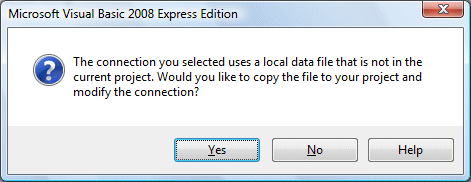Lots of Adobe news this week.
First, the release of Flash Builder 4. It seems a long time ago that I was looking at the first preview of code-name Gumbo; it’s good to see this finally released. Since it is Eclipse-based, it looks similar to to Flex Builder 3.0; but under the covers there is the new Flex 4 SDK with the Spark component architecture. The design tools have been revamped, and a time-saving feature is that you can now generate an event handler with one click. Flash Builder 4 also has built-in unit testing with FlexUnit, which is a big deal for those enlightened folk who do test-driven development.
Adobe has also worked hard on database connectivity. Flash Builder 4 will generate wrapper code for a variety of data sources, including HTTP and REST, PHP, SOAP, and Adobe’s LiveCycle Data Services middleware.
There is a new data/services panel that shows all the available sources, with drag-and-drop data binding, batch updates, and other handy features.
There are a few downsides to Flash Builder 4. ActionScript feels dated if you have been playing with something like C# 4.0, soon to be released as part of Microsoft’s Visual Studio 2010. I’ve also heard complaints that equivalent projects built with Flex are larger than equivalents built with the Flash IDE. The naming is puzzling; we now have to distinguish between the Flash IDE and the Flash Builder IDE, which are completely different products, but the SDK for code-centric development is still called Flex. There is no support yet for AIR 2.0, the latest version of the desktop runtime; nor for the much-hyped iPhone app development. Patience is called for, I guess.
More information on Flex and Flash Builder here.
The next big product launch from Adobe will be Creative Suite 5, for which a launch date of Monday, 12th April has been announced. You can sign up for an online launch event and see some sneak peek videos here.
Finally, Adobe released quarterly financial figures today. The company says they are strong results; revenue is 9.1% higher than last year and GAAP earnings are positive (unlike the last quarter). However, looking at the investor datasheet [PDF] I noticed that new analytics acquisition Omniture now accounts for 10% of revenue; if you deduct that from the increase it does not look so good. Still, a profit is a profit, and the quarter before a major update to CS 5.0 may be under par as users wait for the new release, so overall it does not look too bad. The Q1 Earnings Call is worth looking at if only for its nice indexing; I wish all online videos worked like this.
One questioner asked about HTML 5 – “how quickly can you provide support when it comes”? An intriguing question. I suspect it reflects more on the publicity around Flash vs HTML than on the progress of the HTML 5 standard itself, which is coming in fits and starts. “The reality is that it’s a fragmented standard, but we will continue to support it”, was the answer from CEO Shantanu Narayen, though he added a plug for the “benefits of our runtime, which is Flash”.


